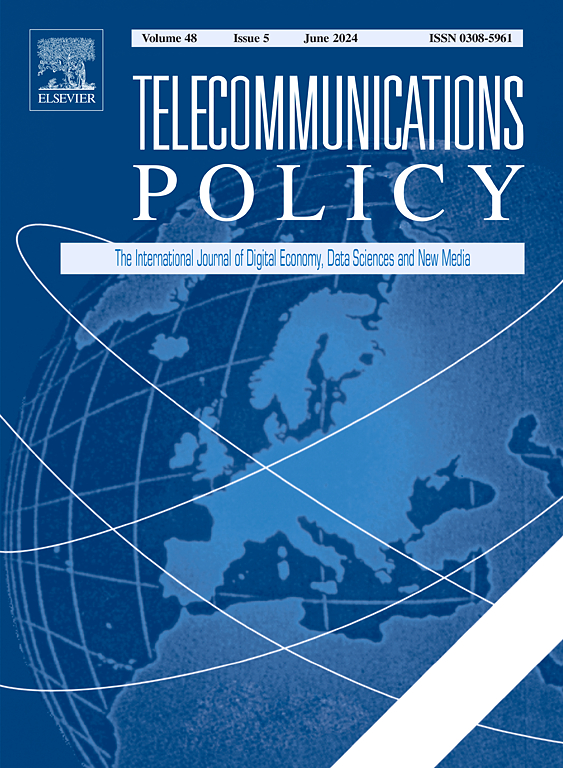Estimating private costs in a descending clock auction: The FCC’s rural digital opportunity fund
IF 5.9
2区 管理学
Q1 COMMUNICATION
引用次数: 0
Abstract
In the United States, the Federal Communications Commission (FCC) distributes subsidies to broadband providers to offer high-speed broadband in unserved areas. This article examines the FCC’s largest program to date, the 2020 Rural Digital Opportunity Fund (RDOF) auction, which distributed billions of dollars and replaced a subsidy mechanism based on engineering cost estimates. I propose a novel model to estimate the private costs of an incumbent wireline provider in areas adjacent to the incumbent’s existing infrastructure. In the model, the incumbent bids for each area up to their private cost, whereas rival bidders include entrant providers that solve a dynamic bidding problem accounting for fixed and interconnection costs. I apply the model to a major incumbent in the RDOF. The findings show that the incumbent received modest rents, almost 70% lower than under the engineering cost estimates.
在递减时钟拍卖中估算私人成本:联邦通信委员会的农村数字机会基金
在美国,联邦通信委员会(FCC)向宽带提供商发放补贴,以在没有服务的地区提供高速宽带。本文考察了FCC迄今为止最大的项目,即2020年农村数字机会基金(RDOF)拍卖,该拍卖分配了数十亿美元,取代了基于工程成本估算的补贴机制。我提出了一个新的模型来估计现有有线运营商在现有基础设施附近地区的私人成本。在该模型中,在位者对每个区域的出价以其私人成本为上限,而竞争投标人包括新进入的供应商,它们解决了一个考虑固定成本和互连成本的动态投标问题。我将该模型应用于RDOF的一名主要在职人员。调查结果显示,现任者获得了适度的租金,比工程成本估计低了近70%。
本文章由计算机程序翻译,如有差异,请以英文原文为准。
求助全文
约1分钟内获得全文
求助全文
来源期刊

Telecommunications Policy
工程技术-电信学
CiteScore
10.80
自引率
12.50%
发文量
122
审稿时长
38 days
期刊介绍:
Telecommunications Policy is concerned with the impact of digitalization in the economy and society. The journal is multidisciplinary, encompassing conceptual, theoretical and empirical studies, quantitative as well as qualitative. The scope includes policy, regulation, and governance; big data, artificial intelligence and data science; new and traditional sectors encompassing new media and the platform economy; management, entrepreneurship, innovation and use. Contributions may explore these topics at national, regional and international levels, including issues confronting both developed and developing countries. The papers accepted by the journal meet high standards of analytical rigor and policy relevance.
 求助内容:
求助内容: 应助结果提醒方式:
应助结果提醒方式:


